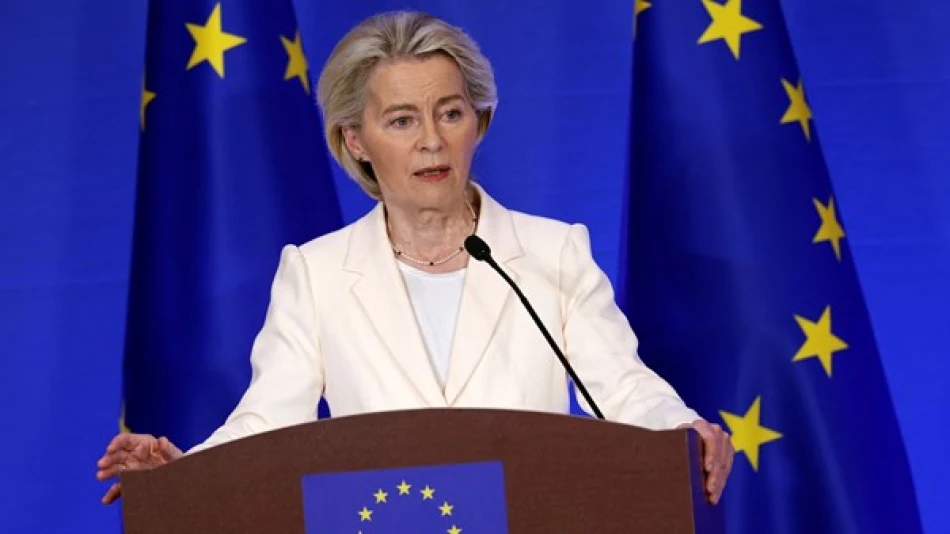
EU Commission President Gears Up for High-Stakes Talks with Former US President Trump
Trump and EU Chief Edge Toward Massive Trade Deal as Tariff Threats Loom
European Commission President Ursula von der Leyen is flying to Scotland for a crucial Sunday meeting with President Donald Trump, as both sides signal they're nearing a framework trade agreement that could reshape transatlantic commerce. The potential deal comes as the EU simultaneously prepares €93 billion in retaliatory tariffs should negotiations collapse, highlighting the high-stakes nature of the talks.
A Golf Course Summit With Global Implications
Trump, speaking to reporters upon his Friday evening arrival in Scotland for what he described as a few days of golf and bilateral meetings, gave the potential EU deal a 50% chance of success. He characterized von der Leyen as a "highly respected" leader and suggested Brussels is "eager to make a deal."
If finalized, Trump claimed this would be his administration's largest trade agreement to date, surpassing the $550 billion deal struck with Japan just days earlier. The timing is strategic—meeting on neutral ground away from the formal diplomatic machinery of Washington or Brussels may provide the flexibility both leaders need to bridge remaining gaps.
The Economic Stakes: Tariffs as Negotiating Tools
EU diplomats indicate the emerging framework would likely mirror the Japan agreement's structure, imposing 15% tariffs on U.S. imports of European goods. However, the deal reportedly includes a more punitive 50% tariff rate on European steel and aluminum exports—sectors that have been flashpoints in U.S.-EU trade tensions for years.
The European Commission's Thursday statement revealed the delicate balance at play: while expressing optimism about reaching a negotiated solution, EU member states have unanimously agreed to impose $109 billion in counter-tariffs on American goods if talks fail. This dual-track approach—negotiate while preparing for trade war—reflects lessons learned from previous Trump-era trade disputes.
Historical Context: Learning From Past Trade Wars
This potential agreement comes after years of transatlantic trade friction that intensified during Trump's first term. The EU's experience with Trump's steel and aluminum tariffs, imposed in 2018, taught European leaders that credible retaliation threats can bring Washington to the negotiating table. Unlike China, which faced prolonged trade conflicts with the U.S., the EU appears to be positioning itself as a more pragmatic partner willing to make structured concessions.
Market and Investor Implications
For global markets, a U.S.-EU trade framework would provide much-needed stability in transatlantic commerce, potentially benefiting multinational corporations that have faced uncertainty over tariff policies. European exporters in manufacturing and agriculture could gain clearer market access terms, while American companies might see reduced regulatory barriers.
However, the proposed tariff structure suggests this isn't a traditional free-trade agreement but rather a managed trade arrangement that maintains protective barriers while creating predictable rules. This approach may appeal to Trump's "America First" base while giving EU leaders something to show their domestic constituencies.
The Broader Geopolitical Calculation
Beyond economics, this potential deal represents a recalibration of Western alliance priorities. With ongoing challenges from China and Russia, both the U.S. and EU have strategic incentives to reduce trade friction between themselves. The informal Scotland setting suggests both leaders recognize the importance of personal diplomacy in resolving complex economic disputes.
The White House's silence on specific meeting details or agreement terms indicates negotiations remain fluid, but the public optimism from both sides suggests significant progress behind the scenes.
 Layla Al Mansoori
Layla Al Mansoori







